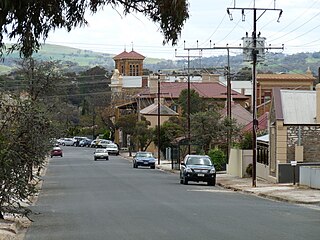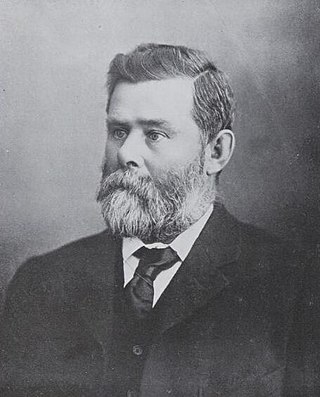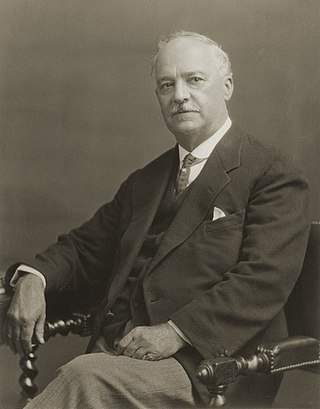
Kapunda is a town on the Light River and near the Barossa Valley in South Australia. It was established after a discovery in 1842 of significant copper deposits. The population was 2,917 at the 2016 Australian census.
The Register, originally the South Australian Gazette and Colonial Register, and later South Australian Register, was South Australia's first newspaper. It was first published in London in June 1836, moved to Adelaide in 1837, and folded into The Advertiser almost a century later in February 1931.

Martin Peter Friedrich Basedow was a native of Hanover, Germany who arrived in South Australia aboard the Pauline in March 1848.

The Bunyip is a weekly newspaper, first printed on 5 September 1863, and originally published and printed in Gawler, South Australia. Its distribution area includes the Gawler, Barossa, Light, Playford, and Adelaide Plains areas. Along with The Murray Pioneer, The River News, and The Loxton News,The Bunyip was now owned by the Taylor Group of Newspapers and printed in Renmark.

The Southern Argus is a newspaper first published from March 1866 in Port Elliot, South Australia, and then in Strathalbyn from 1868 to the present. It is published on Thursdays.

John Lewis was an Australian pastoralist and politician. He was a member of the South Australian Legislative Council from 1898 to 1923, representing the Northern District (1898-1902) and North-Eastern District (1902-1923). He was the father of Essington Lewis.
Charles Richard Wilton was a journalist in the State of South Australia, a longtime literary editor of The Advertiser and authored, under the pen name of "Autolycus", a long-running weekly column in The Courier of Mount Barker.
Quiz was a weekly newspaper published in Adelaide, South Australia from 1889 to 1910. Between 1890 and 1900 it was known as Quiz and The Lantern.

Sir William John Sowden was a journalist in South Australia, who was knighted in 1918.

Edward Lindley Grundy was a businessman, politician and editor in the young colony of South Australia.

William James Cooper Cole was an Australian politician. He was a member of the South Australian House of Assembly from 1910 to 1918, representing the multi-member seats of Stanley (1910–1915) and Port Pirie (1915–1918). He was a member of the United Labor Party until 1917, when he left to join the National Party in the 1917 Labor split.

David James was an Australian politician who represented the South Australian House of Assembly multi-member seat of Wooroora from 1902 to 1918 for the Australasian National League and the Liberal Union.
The District Council of Julia was a local government area in South Australia from 1874 to 1932. The council seat was located at Hampden.
Charles Hastings Barton was a member of the Queensland Legislative Assembly.
The Port Adelaide News was a newspaper published in Port Adelaide, South Australia between 1876 and 1933 with various sub-titles, several breaks in publication and periods of bi-weekly publication.
The Northern Argus, first published on 19 February 1869, is a newspaper printed in Clare, South Australia. It was later sold to Rural Press, previously owned by Fairfax Media, but now an Australian media company trading as Australian Community Media.
The Leader is a weekly newspaper first published in Angaston, South Australia on 24 July 1918, and continues to the present day to be published in the Barossa Valley. It was the first English-language newspaper covering any part of the Barossa Valley, apart from the Kapunda Herald.
The Herald is a weekly newspaper published in Tanunda, South Australia. With its earliest beginnings in 1860, it has been published under the Herald banner since 2005. It was later sold to Rural Press, previously owned by Fairfax Media, but now an Australian media company trading as Australian Community Media.
James Hazel Adamson was a machinist and inventor, better known for his paintings and engravings of marine subjects in the early days of colonization of South Australia.









